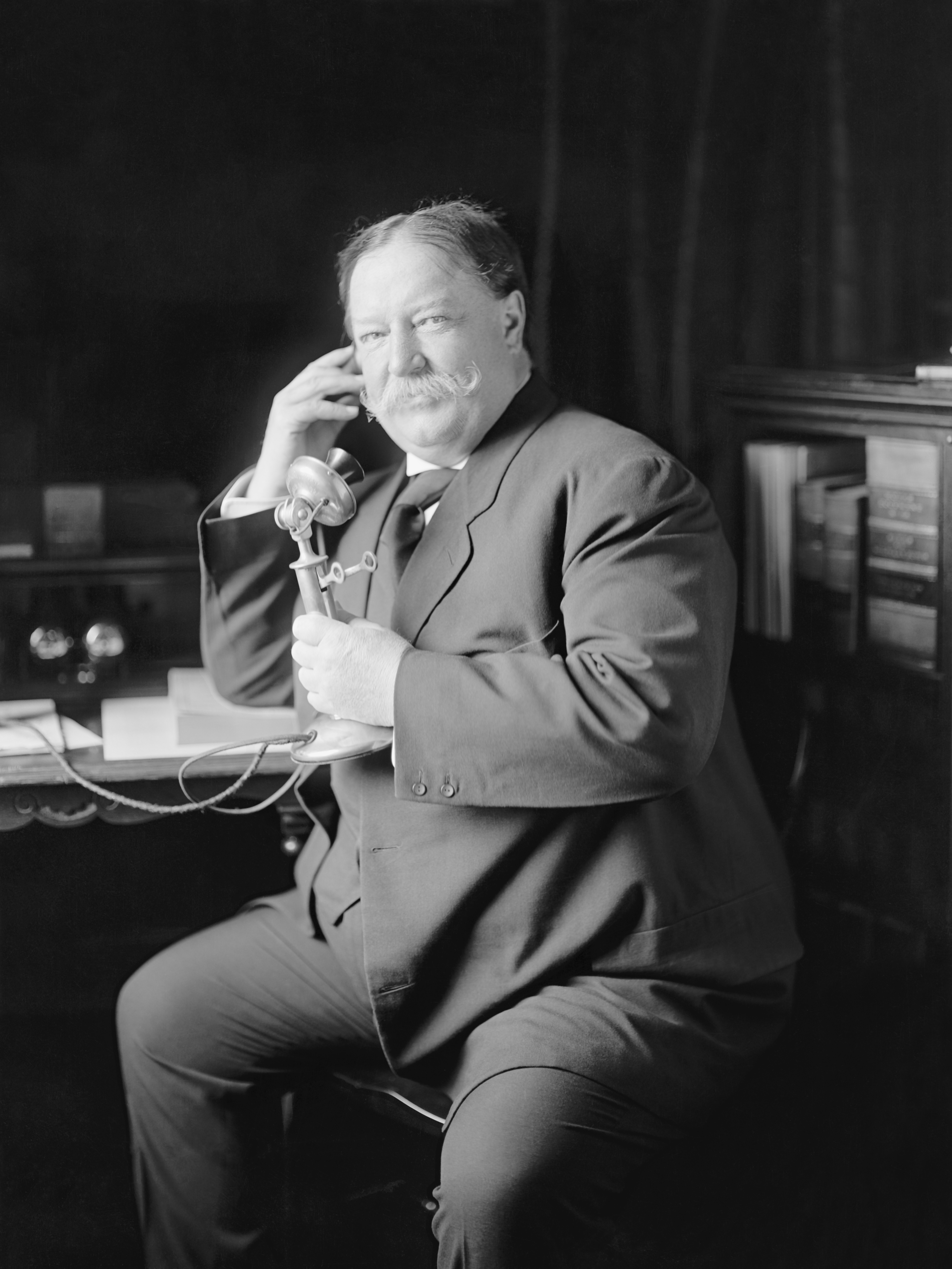|
Commission On Economy And Efficiency
The Commission on Economy and Efficiency was a presidential commission appointed by President William Howard Taft between 1910 and 1913 to look at and propose reforms for the United States federal government, particularly the presidential budget. It is also known in government reorganization and reform scholarship as the Taft Commission, however, this is a bit of a misnomer as the Taft Commission originally referred to the Philippine Commission of which Taft was the chairman. The Commission on Economy and Efficiency is most notable for proposing the first budget for the federal government but also is notable for creating the procedure for the President to establish a commission to study administrative reform. Founding and purpose The Commission, like the Keep Commission, was established to study and propose more efficient methods of organization and reform. Its primary purpose was the study of a budget for the national government but its other purposes included looking at depart ... [...More Info...] [...Related Items...] OR: [Wikipedia] [Google] [Baidu] |
William Howard Taft
William Howard Taft (September 15, 1857March 8, 1930) was the 27th president of the United States (1909–1913) and the tenth chief justice of the United States (1921–1930), the only person to have held both offices. Taft was elected president in 1908, the chosen successor of Theodore Roosevelt, but was defeated for reelection in 1912 by Woodrow Wilson after Roosevelt split the Republican vote by running as a third-party candidate. In 1921, President Warren G. Harding appointed Taft to be chief justice, a position he held until a month before his death. Taft was born in Cincinnati, Ohio, in 1857. His father, Alphonso Taft, was a U.S. attorney general and secretary of war. Taft attended Yale and joined the Skull and Bones, of which his father was a founding member. After becoming a lawyer, Taft was appointed a judge while still in his twenties. He continued a rapid rise, being named solicitor general and a judge of the Sixth Circuit Court of Appeals. In 1901, ... [...More Info...] [...Related Items...] OR: [Wikipedia] [Google] [Baidu] |
Taft Commission
The Taft Commission, also known as the Second Philippine Commission ( Filipino: ''Ikalawang Komisyon ng Pilipinas''), was established by United States President William McKinley on March 16, 1900, following the recommendations of the First Philippine Commission, using presidential war powers while the U.S. was engaged in the Philippine–American War. McKinley's letter of instruction to the commission defined American policies and intentions which make cultural and economic progress, acquire skill in self-government, and eventually progress to national independence. Emilio Aguinaldo, who led the Philippine war against America, wrote retrospectively in 1957 that McKinley's instructions to the commission would "prove one of the most important documents in the history of international relations." The Second Commission was at first the sole legislative body of the Philippines, then known as the Philippine Islands under the sovereign control of the United States. After the passag ... [...More Info...] [...Related Items...] OR: [Wikipedia] [Google] [Baidu] |
Philippine Commission
The Philippine Commission was the name of two bodies, both appointed by the president of the United States, to assist with governing the Philippines. The first Philippine Commission, also known as the Schurman Commission, was appointed by President William McKinley on January 20, 1899 as a recommendatory body. The second Philippine Commission, also known as the Taft Commission, was a body appointed by the president to exercise legislative and limited executive powers in the Philippines. It was first appointed by President McKinley in 1900 under his executive authority. The Philippine Organic Act was passed by the United States Congress in 1902; this enshrined into law the commission's legislative and executive authority. As stipulated in the Philippine Organic Act, the bicameral Philippine Legislature was established in 1907, with the commission as the upper house and the elected Philippine Assembly acting as lower house. The Jones Act of 1916 ended the commission, replacing i ... [...More Info...] [...Related Items...] OR: [Wikipedia] [Google] [Baidu] |
Committee On Department Methods
The Committee on Department Methods, popularly known as the Keep Commission, was appointed by President Theodore Roosevelt in 1905. The Commission's members were Charles H. Keep, Assistant Secretary of the Treasury and Chairman of the Commission, James R. Garfield, Gifford Pinchot, Frank H. Hitchcock and Lawrence O. Murray. The Commission represented the first assertion by a President that the President is responsible for administration. Establishment of the Committee The Commission was generally charged with improving the administration of government services by investigating the administrative best practices of the day. Specifically, it was charged with examining salary classifications, purchasing procedures, accounting procedures, cost accounting, and generally more uniform and efficient business methods. The need for the Commission was documented in Roosevelt's autobiography when he heard the story of an officer who was in charge of a Bureau of Indian Affairs district o ... [...More Info...] [...Related Items...] OR: [Wikipedia] [Google] [Baidu] |
Frank Goodnow
Frank Johnson Goodnow (January 18, 1859 – November 15, 1939) was an American educator and legal scholar. He was the first president of the American Political Science Association. Personal life He married Elizabeth Lyall (1861–1942) in 1886 and had 3 children: Isabel C. (Mrs. E. Kendall Gillett), David F. and Lois R. (Mrs. John V. A. MacMurray). Early life and education He was born in Brooklyn, New York. After private schooling he graduated from Amherst College (AB) in 1879 and from Columbia Law School (LLB) in 1882. At Columbia, in addition to such subjects essential for admission to the Bar, he took courses in public law and jurisprudence offered in the recently organized School of Political Science. Late in 1882 he was offered a position in the School of Political Science on the condition that he prepare himself with a year of study abroad. He studied at the Ecole Libre des Sciences Politiques in Paris and at the University of Berlin. Career Goodnow took up his teach ... [...More Info...] [...Related Items...] OR: [Wikipedia] [Google] [Baidu] |
Budget And Accounting Act
The Budget and Accounting Act of 1921 () was landmark legislation that established the framework for the modern federal budget. The act was approved by President Warren G. Harding to provide a national budget system and an independent audit of government accounts. The official title of this act is "The General Accounting Act of 1921", but is frequently referred to as "the budget act", or "the Budget and Accounting Act". This act meant that for the first time, the president would be required to submit an annual budget for the entire federal government to Congress. The object of the budget bill was to consolidate the spending agencies in both the executive and legislative branches of the government. The act created the Bureau of the Budget, now called the Office of Management and Budget (OMB), to review funding requests from government departments and to assist the president in formulating the budget. The OMB mandates that all government estimates, receipts, and expenditures be cle ... [...More Info...] [...Related Items...] OR: [Wikipedia] [Google] [Baidu] |
Congressional Budget And Impoundment Control Act Of 1974
The Congressional Budget and Impoundment Control Act of 1974 (, , ) is a United States federal law that governs the role of the Congress in the United States budget process. The Congressional budget process Titles I through IX of the law are also known as the Congressional Budget Act of 1974. Title II created the Congressional Budget Office. Title III governs the procedures by which Congress annually adopts a budget resolution, a concurrent resolution that is not signed by the President, which sets fiscal policy for the Congress. This budget resolution sets limits on revenues and spending that may be enforced in Congress through procedural objections called points of order. The budget resolution can also specify that a budget reconciliation bill be written, which the Congress will then consider under expedited procedures. Later amendments The act has been amended several times, including provisions in the Balanced Budget and Emergency Deficit Control Act of 1985, the ... [...More Info...] [...Related Items...] OR: [Wikipedia] [Google] [Baidu] |
Brownlow Committee
The President's Committee on Administrative Management, commonly known as the Brownlow Committee or Brownlow Commission, was a presidentially commissioned panel of political science and public administration experts that in 1937 recommended sweeping changes to the executive branch of the United States government. The committee had three members – Louis Brownlow, Charles Merriam, and Luther Gulick. The staff work was managed by Joseph P. Harris, director of research for the committee. The committee’s recommendations formed the basis of the Reorganization Act of 1939 and the creation of the Executive Office of the President. History President Franklin D. Roosevelt established the Committee on March 22, 1936, and charged it with developing proposals for reorganizing the executive branch.Karl, Barry Dean. ''Executive Reorganization and Reform in the New Deal: The Genesis of Administrative Management, 1900–1939.'' Cambridge, MA: Harvard University Press, 1963. The three-per ... [...More Info...] [...Related Items...] OR: [Wikipedia] [Google] [Baidu] |
Hoover Commission
The Hoover Commission, officially named the Commission on Organization of the Executive Branch of the Government, was a body appointed by President Harry S. Truman in 1947 to recommend administrative changes in the Federal Government of the United States. It took its nickname from former President Herbert Hoover, who was appointed by Truman to chair it. Truman used the Reorganization Act of 1949 to implement the recommendations of the Hoover Commission. Reorganization plans issued under the act could be nullified by a concurrent resolution enacted by both chambers of Congress within 60 days of the date of the order. While most of the commission's program was ultimately implemented, eleven of the 41 reorganization plans issued by Truman to carry out the reorganization were nullified by Congress. History and results In early 1949, the Commission forwarded its findings and a total of 273 recommendations to Congress in a series of nineteen separate reports. The commission was offi ... [...More Info...] [...Related Items...] OR: [Wikipedia] [Google] [Baidu] |
Public Administration
Public Administration (a form of governance) or Public Policy and Administration (an academic discipline) is the implementation of public policy, Administration (government), administration of Government, government establishment (Governance#Public governance, public governance), management of Non-profit organisation, non-profit establishment (Governance#Nonprofit governance, nonprofit governance), and also a subfield of political science taught in Public policy school, public policy schools that studies this implementation and prepares civil servants, especially those in administrative positions for working in the public sector, voluntary sector, some industries in the private sector dealing with Government Relations, government relations and regulatory affairs, and those working as think tank researchers. As a "field of inquiry with a diverse scope" whose fundamental goal is to "advance management and policies so that government can function." Some of the various definitions w ... [...More Info...] [...Related Items...] OR: [Wikipedia] [Google] [Baidu] |
Presidency Of William Howard Taft
The presidency of William Howard Taft began on March 4, 1909, when William Howard Taft was inaugurated as 27th president of the United States, and ended on March 4, 1913. Taft, was a Republican from Ohio. The protégé and chosen successor of President Theodore Roosevelt, he took office after easily defeating Democrat William Jennings Bryan in the 1908 presidential election. His presidency ended with his defeat in the 1912 election by Democrat Woodrow Wilson. Taft sought to lower tariffs--a tax on imports--then a major source of governmental income. However he was out-maneuvered. The new Payne–Aldrich Tariff Act of 1909 raised rates when most people expected reductions. Taft expanded Roosevelt's efforts to break up trusts, launching legal cases against U.S. Steel and other very large companies. Taft made six appointments to the United States Supreme Court, more than all but two other presidents. In foreign affairs, Taft focused on China and Japan, and repeatedly interven ... [...More Info...] [...Related Items...] OR: [Wikipedia] [Google] [Baidu] |

.png)



